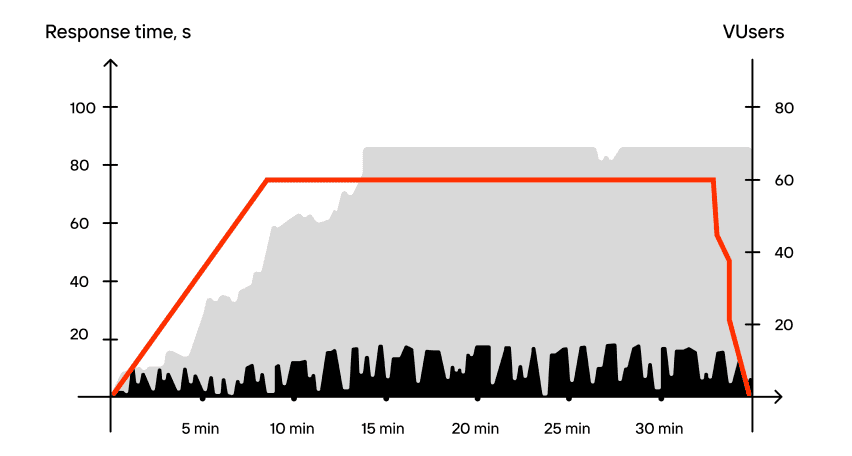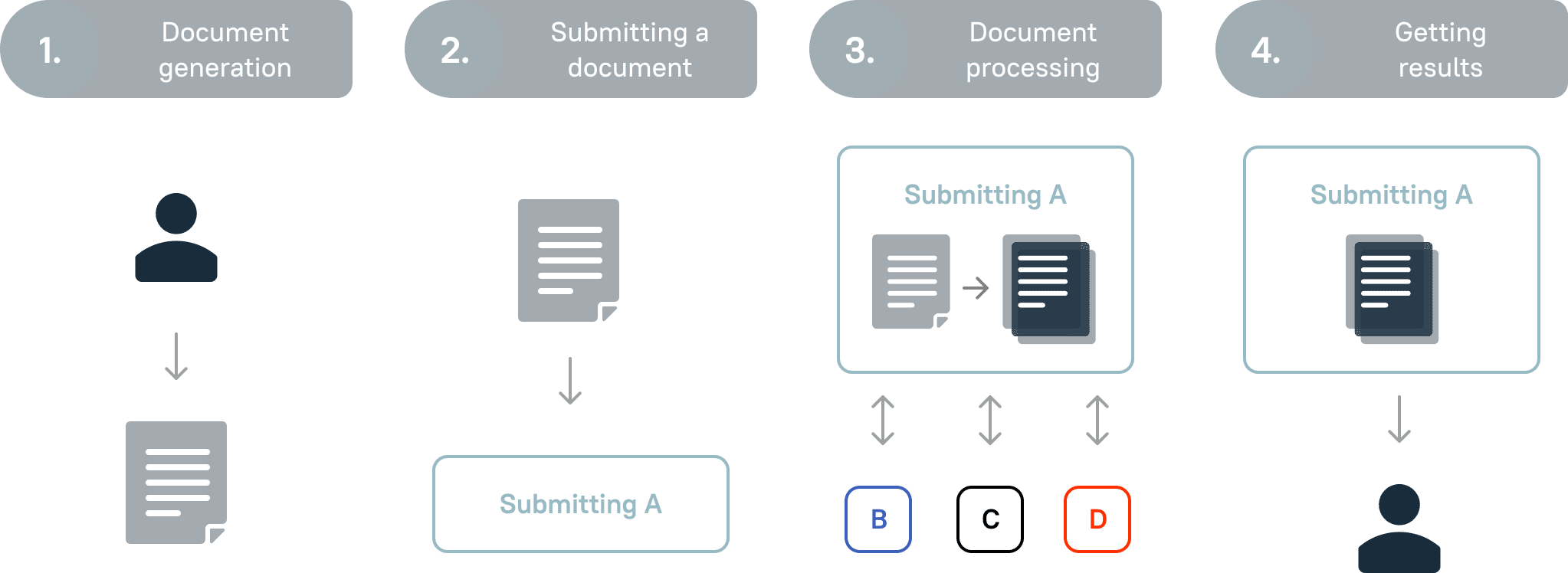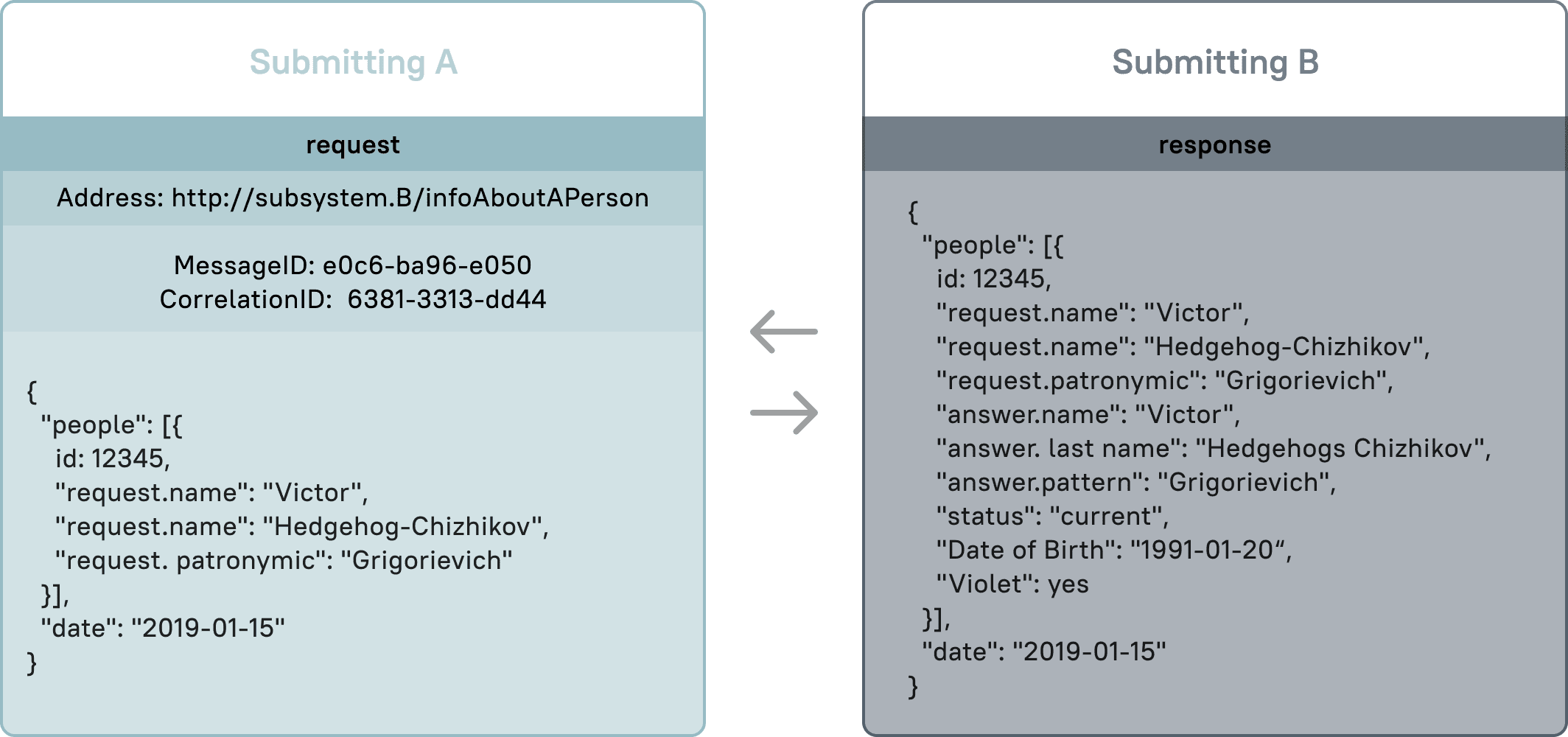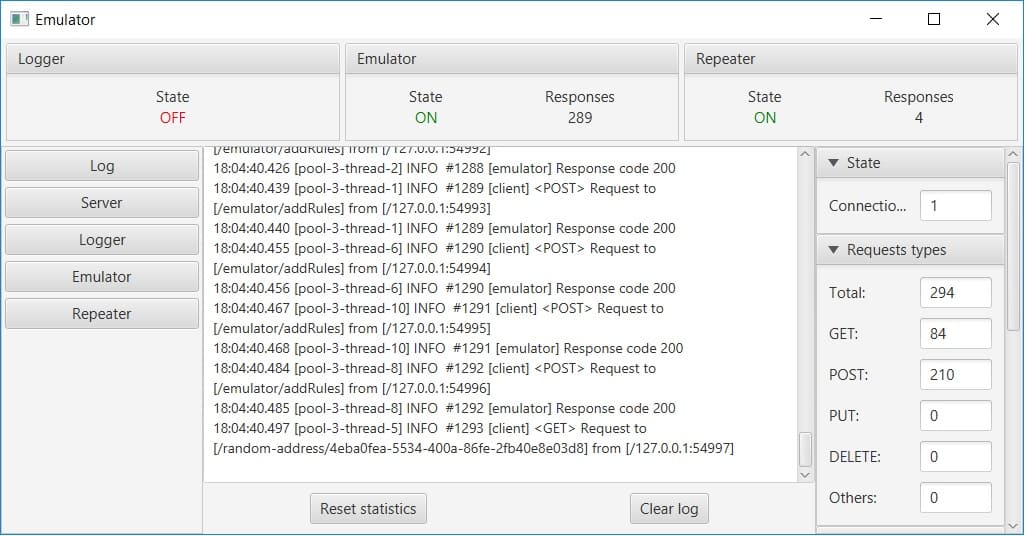Using a REST Request Emulator in a Real-life Project
We utilize the micro service architecture more and more often while developing software nowadays. It allows us not only to speed the development up, but also to make the end product more agile and easy to scale.
A large governmental enterprise that processes a huge amount of various documents has recently approached us. We had to organize the autonomous testing process of key subsystems, which comprise the automated information system. Moreover, we couldn’t use an out-of-box solution (client’s specification), so we had to develop a custom tool that would satisfy the client’s requirements.
How Have We Managed It?
Initially we studied the system specification and designed a subsystem cooperation scheme It allowed us to determine the main requirements and formulate the project charter for the future subsystem emulator.
The document processing workflow looked like this:
The automated information system can be pictured like that:
Subsystem A – it is a transport subsystem that connects all subsystems
Subsystem B, C, D, n – these subsystems, each of which is responsible for processing a specific data set
REST queries are responsible for the subsystem communication.
Here is an example of a subsystem communication:
We’ve chosen JAVA as the language of the subsystem emulator and used the following subsystem and emulator cooperation architecture:
The Emulator Has a User-friendly Native Interface, As Well As the Terminal Run Option.
The emulator’s interface allows to:
Thanks to Its Universality and Agility, the Emulator Can Be Used in the Following Scenarios:
We’ve developed a user manual for the client during the project.
Which Challenges Has Our Team Faced during the Project?
The testing team has encountered the following problems while analyzing the client’s requirements to the emulator:
Related insights in case studies
From Hundreds to Thousands: Scaling MEFA Pathway Software for Mass Student Registration

FolderWave, Inc. is a leading digital services provider in the Massachusetts e-learning sector. It aids millions of students in researching and planning a job-oriented education. The company delivers IT solutions, platforms, and services in partnership with notable non-profit organizations like MEFA Pathway and College Board, which connect a vast network of colleges, schools, and universities […]
How Load Testing Helped Texans Survive Power Outages During a Storm

Background The largest electric distribution cooperative in Texas and the United States, Pedernales Electric Cooperative (PEC), had to test its new software systems, the Storm Center and the OR&S (Outage Reporting & Status), before the release to ensure their adequate performance under peak load. Challenge PEC had a strict release deadline and needed to test […]
Tynor Prepared the New Website for High Sales in Four Days

Tynor Orthotics is India’s largest manufacturer and exporter of orthopedic and fracture aids established in the 90s to deliver quality healthcare products. Committed to a significant expansion in the next three years, Tynor crafted a new e-commerce website focused on excellent customer experience to support this growth. To be confident at launch, the engineering team of Tynor decided to run pre-go-live stress testing for the website. The tight deadline felt challenging, the customer was relieved to hear we provide a quick load testing solution. Quick Load Testing solution includes a four-day load testing project performed by engineers of PFLB and a 1-month subscription to the innovative load testing PFLB platform.
Bank Increases Load Capacity by 450% to Deal with Business Growth

Our client's bank was absorbing other banks, and the number of individual clients was growing. The system was not ready for expansion or integration. The owners started to suspect bottlenecks when problems with paying salaries to corporate clients’ employees arose. As a result, in the next pay period, the load on the system increased dramatically, and the system got overloaded. People did not get their salaries in time, as the system crashed.
Be the first one to know
We’ll send you a monthly e-mail with all the useful insights that we will have found and analyzed
People love to read
Explore the most popular articles we’ve written so far




